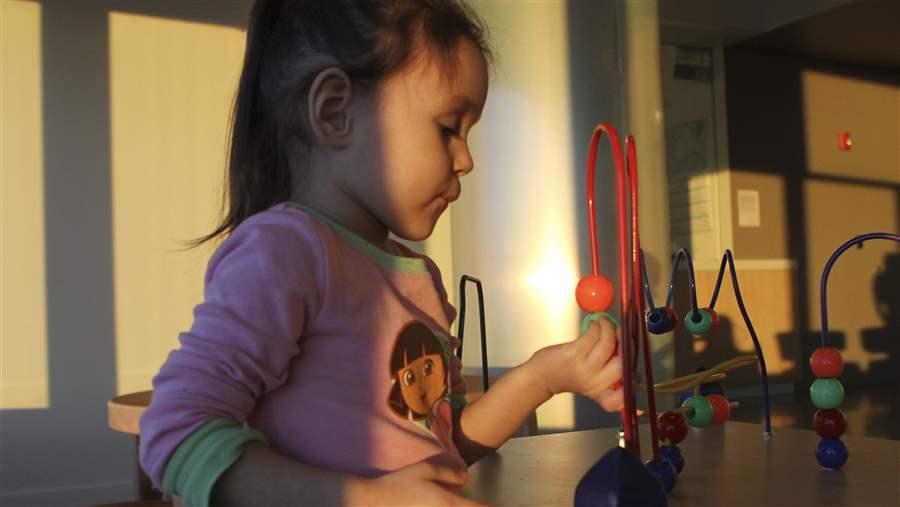Dental Therapists Mean Better Outcomes for Alaska Native Communities, Study Finds
Both children and adults had fewer invasive procedures and more preventive care

Three-year-old Macy Hukill plays in the waiting area of Nome's Norton Sound Health Corporation dental clinic before her appointment with Dental Health Aid Therapist Roz Ferry.
© The Pew Charitable TrustsChildren and adults had lower rates of tooth extractions and more preventive care in Alaska Native communities served frequently by dental health aide therapists than residents in communities not receiving these services, according to a new study released by the University of Washington.
Led by Donald Chi, D.D.S., Ph.D., and funded by The Pew Charitable Trusts, the Rasmuson Foundation, and the W.K. Kellogg Foundation, the study presents an analysis of patients in the Yukon-Kuskokwim Health Corporation (YKHC) from 2006 to 2015. The YKHC, which is a part of the Alaska Tribal Health System, serves 25,000 Alaska Natives representing 58 federally recognized tribes.
Dental therapists, akin to physician assistants in medicine, work under the supervision of a dentist and offer routine restorative and preventive services, including preparing and placing fillings and performing simple tooth extractions. While U.S. studies to date of dental therapists have examined care quality and patient access, this is the first known study to look at long-term outcomes of communities served by these practitioners.
The study uses patient electronic health records and Medicaid claims data to uncover the key findings. Researchers counted the total number of dental therapist treatment days provided in each community. They then compared communities with no dental therapist treatment days to those with the highest number of treatment days and found the following:
- For children under age 3, high exposure to dental therapists was associated with fewer extractions of the front four teeth.
- For children under age 18, high exposure to dental therapists was associated with receiving more preventive care (defined as an exam, cleaning, fluoride treatment, or a combined cleaning and fluoride treatment).
- Adults in communities with the highest dental therapist visit days also had fewer extractions and more preventive care visits.
Dental therapists were first employed in Alaska in 2004 to serve native communities. They have been authorized in Maine, Minnesota, and Vermont, and are also being used to care for Native American tribes in Washington and Oregon. In June 2017, the Alaska Native Tribal Health Consortium, which trains dental therapists, graduated its first student to begin practicing under pilot authority on Native American tribal lands in Oregon. Several other states—including Arizona, Kansas, Maryland, Massachusetts, Michigan, New Mexico, North Dakota, and Ohio—are exploring the potential for authorizing dental therapy to expand access for the underserved.
Jane Koppelman directs research for The Pew Charitable Trusts’ dental campaign.












